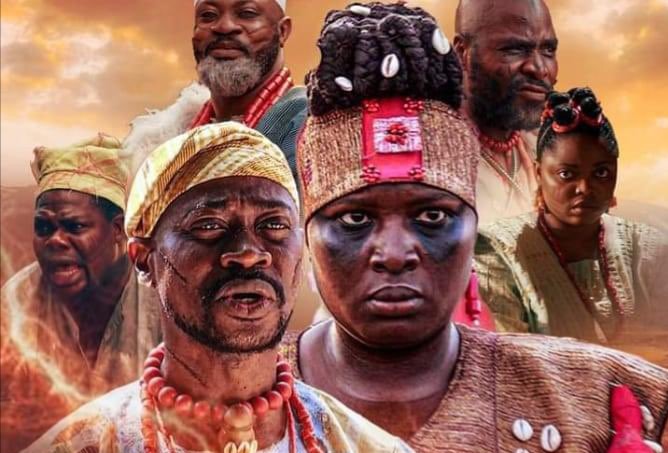Nollywood’s quest to reclaim its narrative continues with ‘Lisabi: The Uprising,’ now streaming on Netflix. Executive-produced by Lateef Adedimeji and directed by Niyi Akinmolayan, this epic historical film premiered on September 27.
‘Lisabi’ contributes to Nollywood’s growing emphasis on telling authentic Nigerian stories, exploring the nation’s history, identity, and origins.
Although some aspects of the film deserve more attention, nonetheless, it remains a commendable addition to Nollywood’s historical film repertoire.
SYNOPSIS
‘Lisabi’ spotlights the legacy of the fabled Yoruba hero, Lisabi, whose life left a lasting mark on Yoruba history.
Set in the 18th century, the film tells the story of an Egba farmer who ignites a rebellion against the oppressive Oyo Empire.
His defiance, culminating in the defeat of over 6000 Oyo soldiers, secures Egba’s independence after centuries of subjugation.
THE STRONG POINTS OF THE FILM
From the opening scene, it is clear that the film’s set design was carefully thought out and meticulously executed. The depiction of the Oyo Empire’s architecture, alongside the placement of traditional sculptures, created a definitive and captivating atmosphere. The attention to cultural detail added a rich, authentic ambiance to the film, making it a standout highlight.
The cinematography, lighting, and camera work in ‘Lisabi’ were exceptional. With this recent project, it is safe to say Nollywood is steadily mastering the art of delivering high-quality visuals. The excellent cinematography gives the film a cinematic polish that sustained my attention from start to finish.
The casting performances in ‘Lisabi’ were commendable. Featuring a lineup of seasoned actors, the film delivered outstanding performances across the board. Ibrahim Chatta, Odunlade Adekola, and Lateef Adedimeji continued to solidify their places in the industry with their professionalism and skills. Mr Macaroni also brought the emotional depth to his role, while Liquorose’s appearance added a breath of fresh air. She embraced her character with confidence and gave a strong performance. The actors’ dedication truly elevated the film, making it even more engaging.
The way the film handled its themes with sensitivity and nuance is also commendable. Themes such as the misuse of power, the strength of unity, and the harrowing issue of rape added depth and complexity to the narrative, making the story more impactful and relatable. The thoughtful exploration of these topics enriched the film and also offered much to reflect on.
Not to be overlooked is the film’s music and soundtrack, they were amazing. The eulogy and traditional songs added so much emotion and depth to each scene, really pulling me into the story. I would say it was also one of the aspects that helped bring the whole film together and made it an even more engaging experience.
THE WEAK POINTS OF THE FILM
While the film is understandably a biopic, it could have been made more engaging. There was a lack of suspense or gripping moments, aside from the scene where Osokenu was killed. Surprisingly, the character of Lisabi, who is supposed to be the central figure, is not given much focus until the end, when he suddenly transforms into a powerful person. How did he evolve from being a farmer to someone with such powers? Hopefully, the sequel will shed more light on this transition.
Another aspect that deserves attention is the authenticity of language. Given the cultural significance of the Egba people in the film, seeing some actors struggling with the language was somehow. Aside from Lisabi, several actors displayed inconsistency in their accents and fluency. It is high time Nollywood took language accuracy seriously to preserve the authenticity of these cultural narratives.
While the costume design and tribal mark effects were done with professionalism, there were some visual effects (VFX) that fell short. For instance, the beheading of Sangodeyi could have been more realistic if there had been a proper depiction of blood gushing from the body, rather than making it appear static, like a tree. Another underwhelming moment was when Lisabi’s “helpmates” transformed into animals, which lacked realism.
Additionally, the twirling of leaves during the fight scene was distracting. The effect made it difficult to follow the action, taking away from the intensity the scene was meant to convey. The visual distraction lessened the impact that should have been achieved in that scene.
FINAL VERDICT
‘Lisabi: The Uprising’ gets a 7/10
Copyright 2024 TheCable. All rights reserved. This material, and other digital content on this website, may not be reproduced, published, broadcast, rewritten or redistributed in whole or in part without prior express written permission from TheCable.
Follow us on twitter @Thecablestyle

